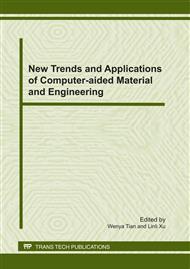[1]
Wen-Chung Chang, in: ECAL 2007, LNAI 4648, edited by F. Almeida e Costa et al, Binocular Vision-Based Robot Control with Active Hand-Eye Coordination, pp.726-735, Springer-Verlag Berlin Heidelberg (2007).
DOI: 10.1007/978-3-540-74913-4_73
Google Scholar
[2]
Duccio Fioravanti, Benedetto Allotta, and A. Rindi: Image based visual servoing for robot positioning tasks, Meccanica, vol. 43 (2008), p.291–305.
DOI: 10.1007/s11012-007-9095-1
Google Scholar
[3]
Seth Hutchinson, Gregory D. Hager, and Peter I. Corke: A Tutorial on Visual Servo Control, IEEE TRANSACTIONS ON ROBOTICS AND AUTOMATION, vol. 12, no. 5 (1996), pp.651-670.
DOI: 10.1109/70.538972
Google Scholar
[4]
F. Chaumette, and Ezio Malis, 2 1/2 D visual servoing: a possible solution to improve image-based and position-based visual servoings, in: IEEE Int. Conf. on Robotics and Automation, ICRA2000, San Francisco, California, (April 2000).
DOI: 10.1109/robot.2000.844123
Google Scholar
[5]
Hicham Hadj-Abdelkader, Youcef Mezouar, and Philippe Martinet, in: Visual Servoing via Advan. Numer. Methods, LNCIS 401, edited by G. Chesi and K. Hashimoto, Points-based Visual Servoing with Central Cameras, pp.295-313, Springer-Verlag Berlin Heidelberg, (2010).
DOI: 10.1007/978-1-84996-089-2_16
Google Scholar
[6]
W. Wilson, C. W. Hulls, and G. Bell: Relative end-effector control using cartesian position-based visual servoing, IEEE Transaction on Robotics and Automation, vol. 12, no. 5 (1996), pp.684-696.
DOI: 10.1109/70.538974
Google Scholar
[7]
E. Espiau, F. Chaumette, and P. Rives: A New Approach to Visual Servoing in Robotics, IEEE Trans. Robotics and Automation, vol. 8, no. 3 (1992), pp.313-326.
DOI: 10.1109/70.143350
Google Scholar
[8]
Andrea Bacciotti, and Lionel Rosier: Liapunov Functions and Stability in Control Theory (Springer-Verlag Berlin Heidelberg 2005).
Google Scholar
[9]
J. Craig: Introduction to Robotics: Mechanics and Control (Prentice Hall, 2005).
Google Scholar
[10]
XIAOMING GAO, DARREN DAWSON, and ZHIHUA QU: On the Robust Control of Two Manipulators Holding a Rigid Object, Journal of Intelligent and Robotic Systems, vol. 8 (1992), pp.107-119.
DOI: 10.1007/bf00314701
Google Scholar


